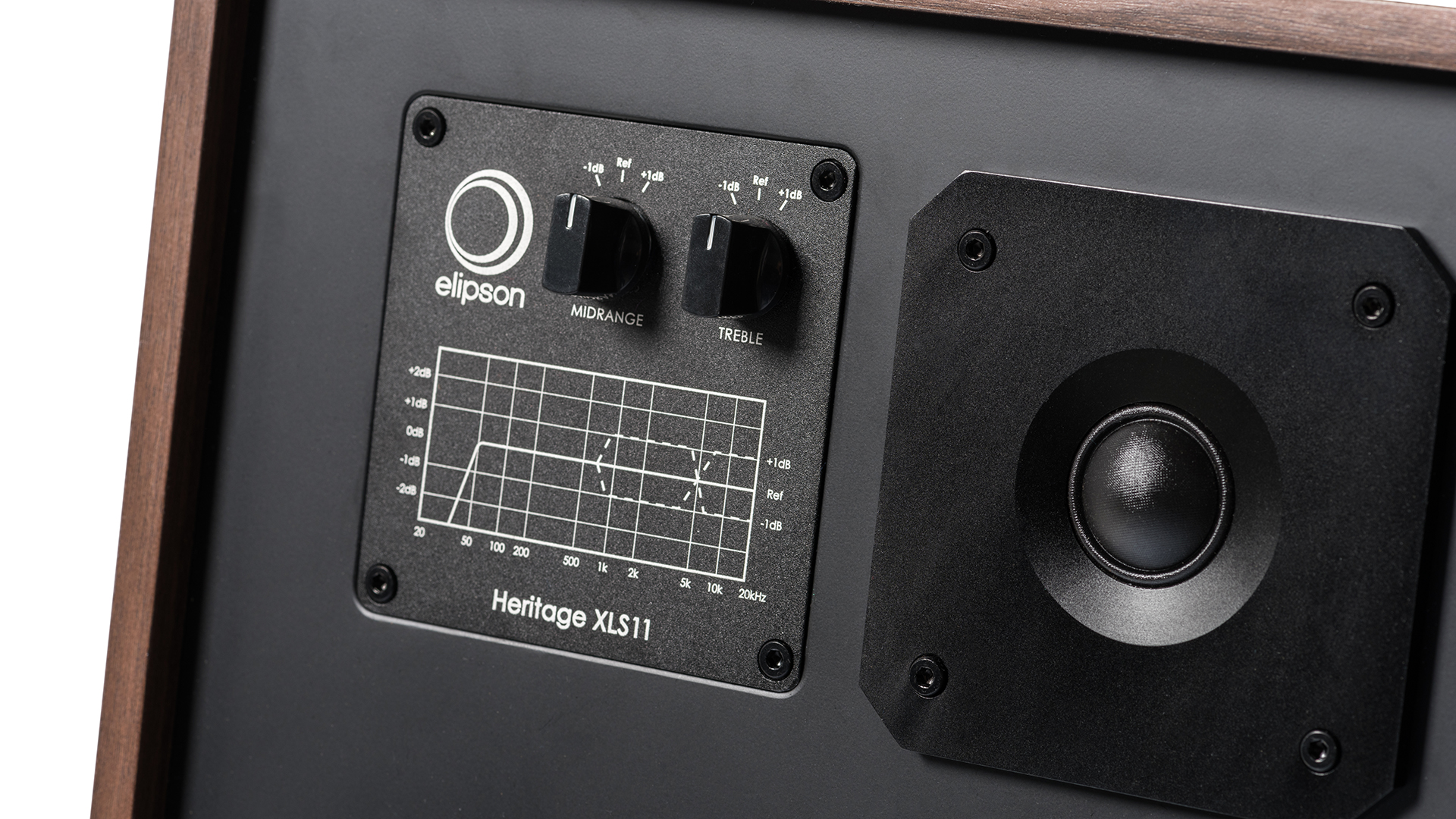Nostalgia is vogue. Here at the editorial office, Geir Nordby leads the vintage-style competition by having a set of JBL 4411 monitor speakers from 1984 lying on his desk, while yours truly has to make do with a smaller set of JBL L86s from 1982.
We’re also seeing an increasingly dense flow of speakers attempting to revive the virtues of the past. The JBL L100 Classic is a reinterpretation of a popular speaker, while the Klipsch Heresy IV descends in a straight line from a 1957 model.
American role models
French Elipson has also jumped on the vintage bandwagon. The company was famous in the 1950s, 60s, and 70s for its spherical speakers. But this time they’ve looked across the Atlantic and taken inspiration from American speakers.
The Elipson Heritage XLS11 looks like something JBL might have built in the 80s, and the name brings to mind Klipsch. But copying must be the highest form of homage you can give to a competitor.
We’re dealing with a medium-sized three-way speaker in a size that’s too small to place on a stand (or, for that matter, in a bookcase) and too small to place directly on the floor. Fortunately, Elipson makes some metal feet that raise the speakers slightly off the floor while tilting them slightly backwards.
Nostalgia through and through
The cabinet is pure nostalgia. The speakers are – of course – veneered with real walnut, and the drivers are just as classic: an 8-inch woofer with light diaphragm, a 2-inch midrange driver and a 22 mm dome tweeter. A front-mounted bass port, two knobs for adjusting midrange and treble levels and a sign with a printed frequency curve complete the vintage style!

Three-way speakers
The Elipson Heritage XLS11 is a three-way speaker, which is a bit of a rarity these days. We encounter mostly two-way speakers, and if there are indeed three drivers in the cabinet, it is usually in a 2.5-way system, where one of two woofers is cut off at a low frequency, while the other continues upwards in the frequency range until it meets the tweeter.
But not here. The Heritage XLS has a dedicated midrange driver, and Elipson himself points out that the unit covers a full three octaves, from 850 Hz to 5 kHz.
Such a configuration was common in the type of monitor speakers of which the Heritage XLS11 is a recreation. And it carries some technical advantages. Firstly, it avoids having crossover frequencies in the midrange, where the ear is most sensitive. And secondly, the woofer in a two-way system can have a hard time covering the highest frequencies – even if you do call it a midwoofer.
Sound quality
By its vintage look, you’d inevitably expect the Elipson Heritage XLS11 to have a full bass and forward sounding rock sound. This is realised quite well at first impression.
While there is ample bass to cover the drums and electric bass, the deep bass is conspicuous by its absence. This is entirely by-the-book when we’re dealing with a relatively small and fairly efficient speaker (90 dB sensitivity).
The treble is impeccable and the overtones come through well. However, the treble is a little overshadowed by the midrange.
Two-way speakers often have a tendency to ‘sag’, where the midrange can’t keep up with the bass and treble in terms of level. That’s not the case here. In fact, there’s almost more than is desirable. During the test period, the level controls come into play. According to the printed text, the knobs can raise or lower the midrange and treble respectively by +/- 2 dB.
Attenuating the midrange helps the balance, but the reproduction remains a bit sharp. It should be stressed that this is a modest tendency, and the Elipson Heritage XLS11 leaves the impression of a speaker that is entertaining to listen to.
The nuance isn’t the best I’ve heard, even considering the price. This can be heard, for example, in the fact that singing voices that are relatively similar can be difficult to distinguish. For example, on ‘Right Hand Man’ from the musical Hamilton. On the other hand, you can’t have it all at. And we’re dealing with a three-way speaker with real wood veneering and a solidly built cabinet at a competitive price.

Competitors
If you’re dreaming of putting a pair of classic, walnut-defined three-way speakers in your den, the Elipsons are a cheaper option than what you’ll find from JBL and Klipsch. On the other hand, if you want to party, the Vestlyd V15C isn’t much more expensive than the Elipson, and there’s also a cheaper model available.
Conclusion
The Elipson Heritage XLS11 looks like something from a bygone era that many long for. And it is hardly possible to find a set of new three-way speakers in genuine walnut finish at a cheaper price. For the price, you get a soundstage that’s quite pleasant and with an appropriate fun factor. Nuance isn’t its strongest suit, and midrange reproduction can seem a little harsh. But this is not a speaker built for chamber music.

We think
Attractive and well executed design. A solidly built, classic three-way speaker at a reasonable price. The sound is somewhat unpolished.
1699 €
Specifications
- Working principle: 3-way bass reflex
- Woofer: 8″ with cellulose cone
- Midrange: 55 mm dome
- Tweeter: 22 mm silk dome
- Impedance: 6 ohms
- Sensitivity: 90 dB
- Recommended amplifier power: 50 – 150 W
- Frequency range: 45 Hz – 25 kHz (+/- 3 dB)
- Crossover frequency: 850 Hz, 5 kHz
- Dimensions: 32 x 56 x 27 cm (WxHxD)
- Weight: 17 kg
- Colours: Walnut
- Web: en.elipson.com






